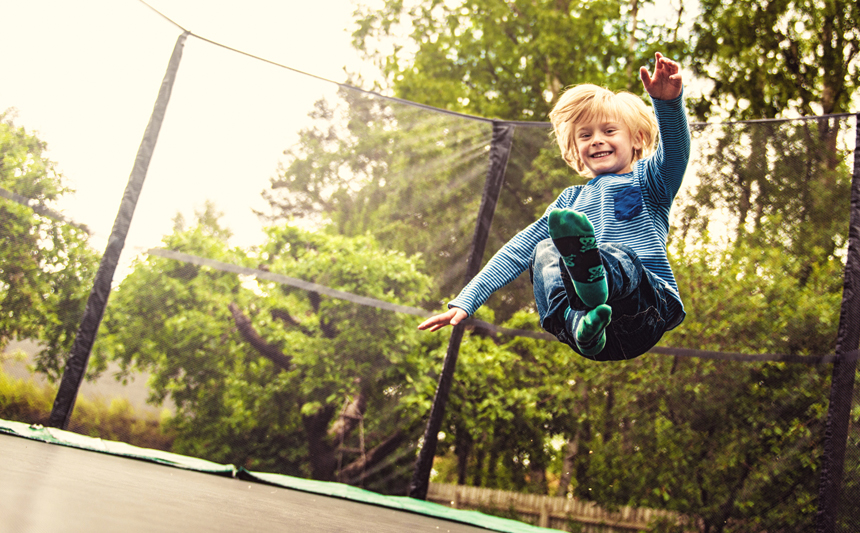Trampolines can be great fun. Here’s how to prevent an accident.

Jumping up and down on a backyard trampoline is a fun warm-weather activity for kids of all ages. But unfortunately, the classic pastime poses some serious injury risk, too.
“There’s a high risk of injury for children,” says Dr. John Draus, a pediatrician here at UK HealthCare. Draus, director of the Pediatric Trauma Program, warns that “there is the potential for serious head or neck injuries” with trampolines.
Statistics show that thousands of people injure themselves on trampolines every year. Children under six are especially at risk for injury.
If you have a trampoline or your child is spending time at a house with a trampoline, minimize the risk for an accident by following these safety tips.
Do’s and don’ts
- Only one person at a time. An overwhelming majority of trampoline injuries occur when more than one person is jumping at a time.
- Don’t let children use the trampoline unsupervised. Remove the trampoline ladder when not in use. This will limit young children’s ability to jump unsupervised.
- Don’t wear jewelry or other sharp objects while jumping. Jewelry could become caught in the trampoline or injure jumpers when they land. Remove everything from your pocket and don’t wear a hat while jumping.
- Discourage somersaults and other risky moves. These can lead to head and neck injuries, wrist sprains or fractures, or other serious injuries.
- Don’t let children younger than 6 on a full-size trampoline. These children are not physically developed enough to control their bouncing.
- Adults, don’t use the trampoline while under the influence of alcohol or drugs. Drugs or alcohol impair your judgment.
Make your trampoline safer
- Install your trampoline away from trees, fences or other yard hazards. And make sure nothing is hidden under the trampoline.
- Make sure that your trampoline is on level ground. Injuries are more likely when a trampoline is set up on uneven ground. To reduce injury risk, you can also install ground safety pads.
- Use safety nets, pads and ladders. Safety nets and pads aren’t a perfect solution, but they can help. Small children should always use an attached ladder to get on and off a trampoline.
- Do routine checks on all of your safety equipment on the trampoline. Check for holes, broken webbing or broken springs.
- Check the springs and bolts on the trampoline itself. Fix anything that is loose, rusted or broken.
- Don’t leave chairs or other objects near the trampoline. Keep the area around your trampoline neat and clean to avoid any hidden hazards or preventable injuries.
This content was produced by UK HealthCare Brand Strategy.




